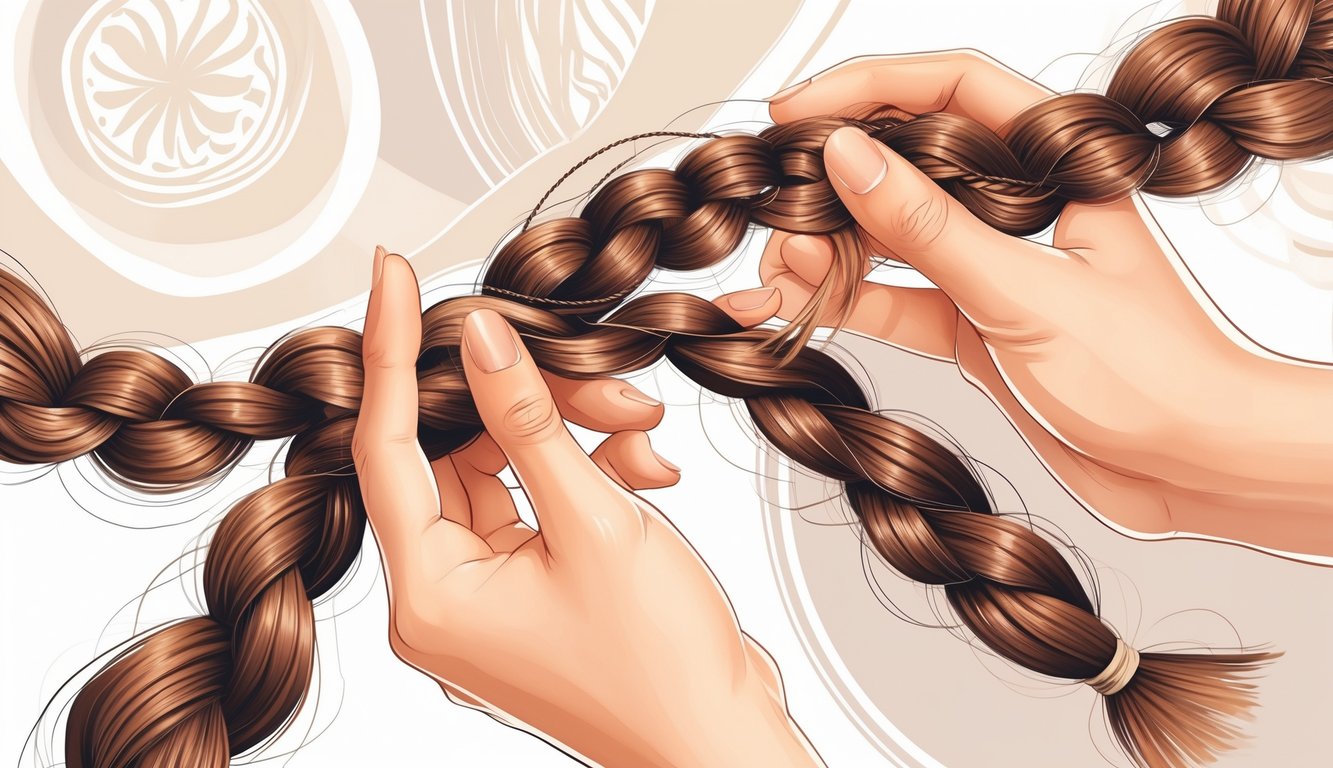
Five tutorials. FIVE. All yelling about “perfect partings,” none of them mentioning that one crooked triangle and your cornrows bail on you after six days. I mean, how is this not basic knowledge? Turns out, the parting pattern—triangle, zigzag, whatever—decides if your style lasts, grows out in a way that doesn’t make you hate yourself, or morphs into a lumpy, frizzed-out disaster before the weekend. My stylist actually said, “It’s not just a braid, it’s architecture,” and honestly, she looked at my box braids like I’d built a house out of Jenga blocks. Real pros? They obsess over tension, direction, density—stuff like the bricklay method or stitch braids, which, I swear, normal people don’t even know exists, let alone why it matters.
YouTube “quick guides” make me want to scream. They never talk about how scalp health gets demolished by too-tight braids. Yeah, it looks neat for a hot second, but then you’re slathering on leave-in or googling “how to regrow edges.” Pro tip: Harper’s Bazaar says you’ve gotta prep your hair, especially with kanekalon extensions, or you’re just counting down to buildup and headaches. Why does nobody mention that a simple swap from three-strand to feed-in changes everything? I’m not kidding—I wish someone had told me.
My stylist claims she can spot a rookie’s pattern from across the room, just by the way the roots puff and the sections ignore the direction hair actually grows. That’s some next-level witchcraft. Nobody writes about how humidity mesh bonnets work better than silk wraps for certain curl patterns, or how spacing tricks save your scalp. I still can’t believe nobody told me patterns matter more than “skill” for how long your style survives. Maybe they don’t want us to know?
The Secret Power of Braiding Patterns
Nobody ever says, “Hey, tightness is everything,” until you’re undoing a lumpy French braid and blaming your hair ties. It’s not the ties. It’s the pattern. Every tiny, repetitive section, every minuscule bit of tension—if you’re like me, you chase that “smooth enough” look and end up with a sore scalp anyway.
How Braid Structure Impacts Results
Box braids vs. three-strand? People act like you can just pick one. You can’t. The grid, the section size, the way you yank tension across each row—mess it up, and your style unravels days early. Some beauty editor told me, “If you want long-lasting results, it’s structure or nothing.” Sure, leave-in conditioner helps, but if your technique’s garbage, your ends will fuzz out and untwist faster than you can say “protective style.”
I’ve overlapped strands at the wrong angle—three tutorials in, still got it wrong. Frizz doubled in the humidity. Micro-braids? You basically need tweezers. Want fullness? Dutch or feed-in, or you’ll end up with weird gaps. One stylist always checks the nape for tension bumps—she swears those ruin everything within two days. I used to roll my eyes, but my neck disagrees.
Why Pattern Choice Is Key
Cornrows sound easy, right? Unless your hair grows south instead of east. Patterns aren’t just for looks—biggest lie I ever swallowed as a newbie. Senegalese twists, Fulani, halo crowns—they all change how product spreads on your scalp. One braiding expert said she picks patterns for retention, breakage control, or even scalp cooling. I only stopped losing my edges when I switched to smaller, staggered braids last summer. Coincidence? No idea.
S-shaped, zig-zag, straight-back—pick your poison. If the pattern fits your lifestyle, you get less breakage and less fuss. I copied a celebrity once, and my hair just flopped. Pro stylists do this “scalp mapping” thing—apparently it has historic significance. I wish I’d known. If you’ve ever left the salon with more breakage than you started with, you get it.
How Professionals Select the Right Pattern
“Cornrows last longest.” Sure, if you have the right hair and never sweat. I always run through the same checklist: hair health, pain tolerance (seriously, some people will suffer for symmetry), how much styling you actually do, and how wild things get after three weeks.
Professional Assessment of Hair Type
Tight curls, thin hair, oily or dry scalp—I’ve seen every combo. None of the TikTok hacks save you from thinning at the nape. Kinky or coily textures need patterns that cradle the strands. If you’ve got colored hair or a recent keratin treatment, everything changes.
I don’t trust product labels. “Protective” hair sometimes shreds your edges if your hair’s already fragile. And water? If you swim a lot or have hard water, the prep and density have to change. Sectioning should follow how your hair falls, not fight it. Stylists need to avoid breakage from too much pattern tension, but most product reps just skip over that.
Matching Patterns to Client Goals
Pinterest is full of Fulani braids, but nobody mentions how gym sweat trashes a middle part in a week. If you need your braids to last for a Paris trip, or just for a one-day festival, you can’t use the same pattern. It’s about your actual life, not some influencer’s filtered selfie.
I’ve switched patterns for clients who want up-dos or less regrowth showing—sometimes the “S” bend hides roots better. Nobody comes in asking for “traditional;” it’s always, “Can I wear headphones?” or, “Will this flatten if I sleep on it wet?” Real life stuff. If you use extensions, some patterns hold them better, and I know which wraps hide synthetic shine—skip the shiny serums, trust me.
Expert Pattern Customization
Industry “standards?” Please. If a client confesses about breakage halfway through, you change the plan. I’ll add vent spaces where growth is patchy, so the pattern looks random but actually protects weak spots.
Try explaining to someone why diagonal cornrows outlast straight ones for people who wear helmets, or why a beehive works for wigs but falls apart if you have scalp psoriasis. I have charts, but mostly I just go by feel—quarter-inch for coils, half-inch for straight, maybe skip a section if you use scalp oil. Most new stylists stick to the book, but honestly, you have to read the head as you go. No two are the same. If you ever figure out why the left side always sits weird, tell me.



